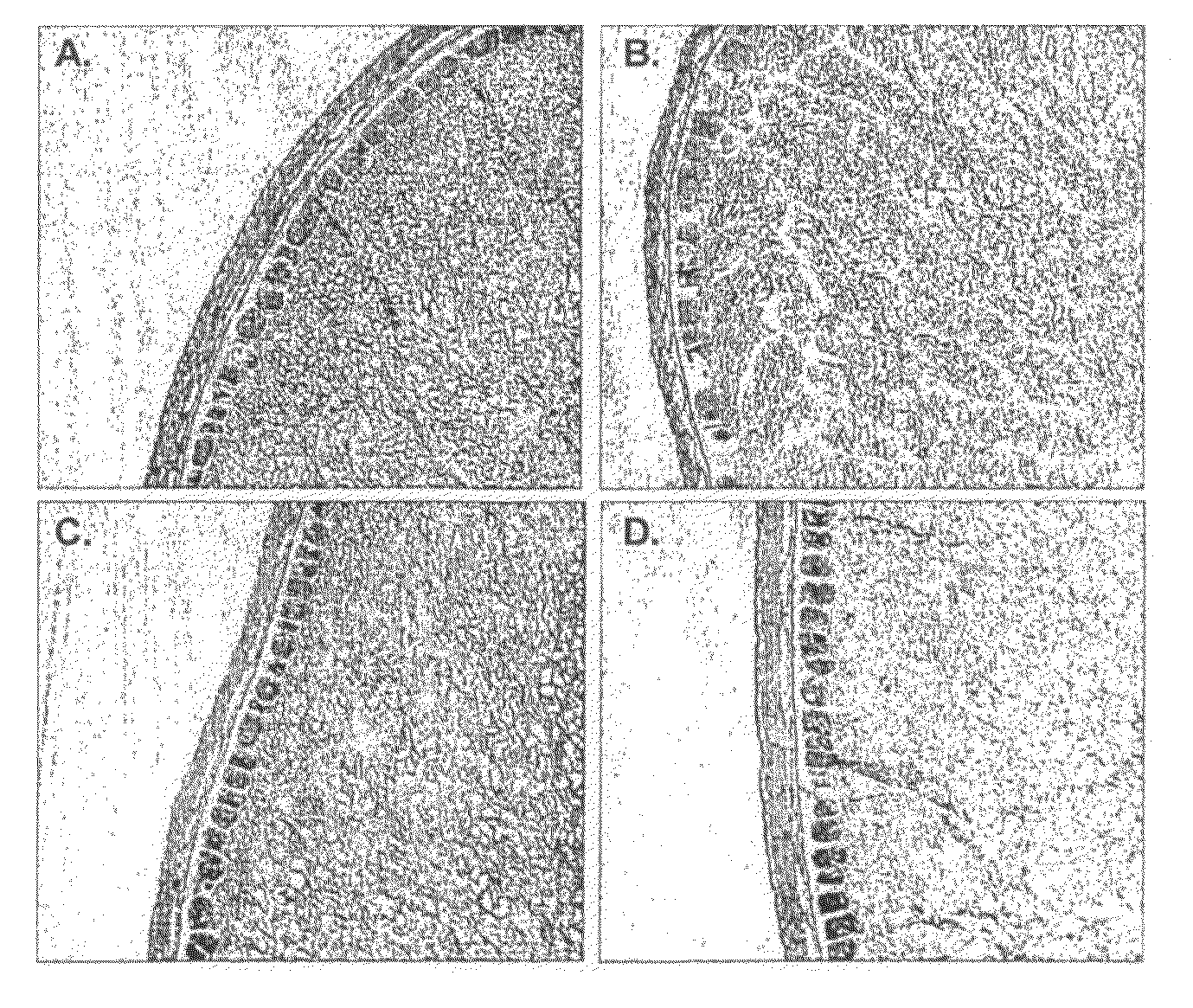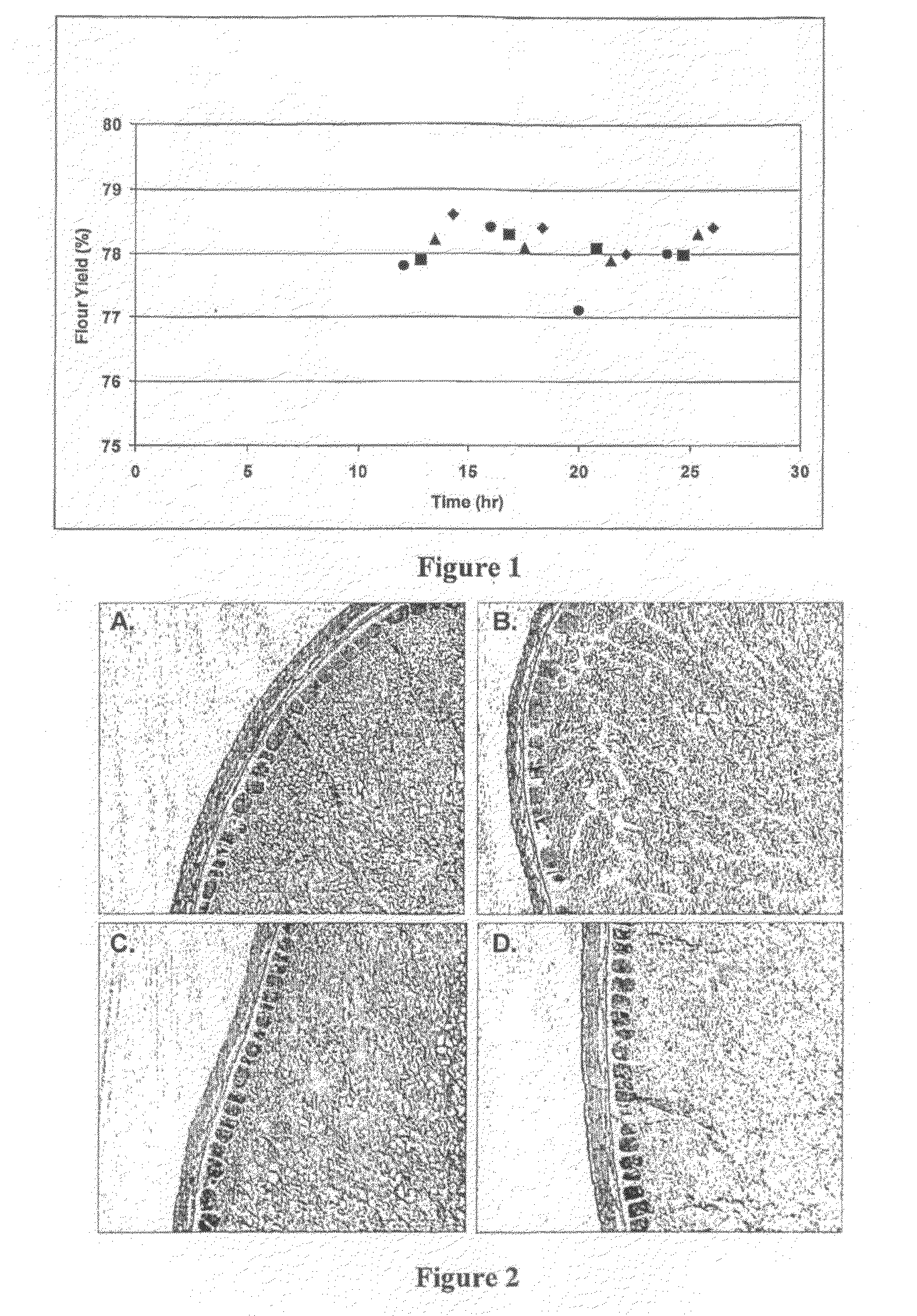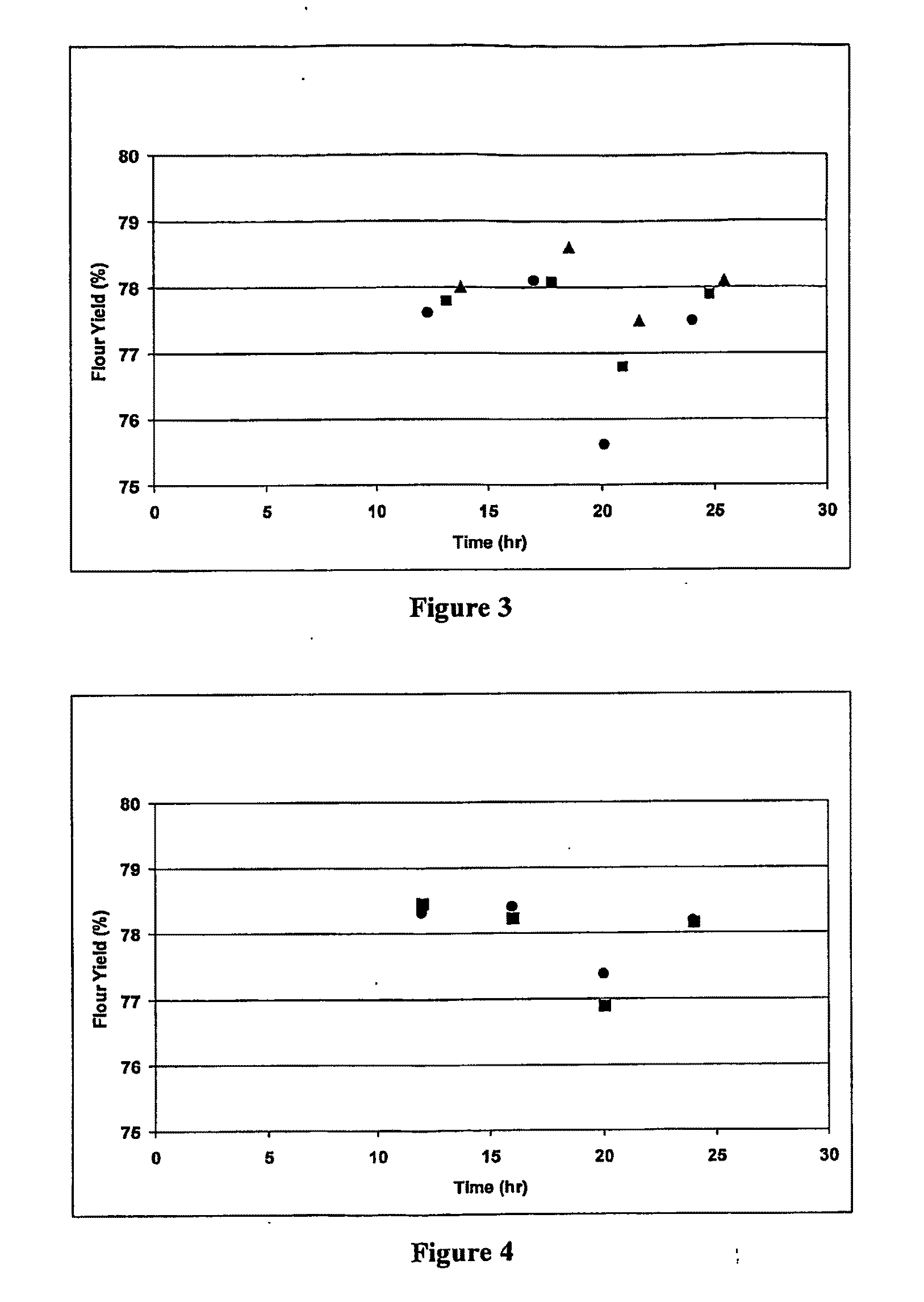Bioprocessing of grains
a technology of bioprocessing and grains, applied in the direction of enzymes, plant ingredients, baking, etc., can solve the problems of reducing so as to improve the quality and yield, reduce the cost of production, and improve the quality of endosperm
- Summary
- Abstract
- Description
- Claims
- Application Information
AI Technical Summary
Benefits of technology
Problems solved by technology
Method used
Image
Examples
example 1
Laboratory Scale Milling Incorporating Plant Hormones
Materials and Methods
[0072]Wheat cv. Wedgetail was milled on a laboratory Buhler test mill to determine whether the addition of any of the major plant hormones i.e. gibberellic acid (GA3), indole acetic acid (IAA), or absicisic acid (ABA) had an impact on flour yield or flour quality.
[0073]A matrix design experiment was conducted where all the three hormones at 1.5 mg / kg crop kernel concentration plus control samples were milled at nominal times after conditioning of 12, 16, 20 and 24 hours. The standard conditioning time for hard wheat such as Wedgetail is 16 hours.
Results and Discussion
[0074]The results of this test are shown in Table I and in a graphic form in FIG. 1. Flour yield was highest for the control samples after a 16 hour conditioning time. Interestingly, the highest flour yield resulted from the ABA treatment and after only a 14 hour conditioning time. ABA produced the highest or equal to highest flour yields for the ...
example 2
Impact of Enzymes on Cellular Structure, Flour Yield and Quality
Materials and Methods
[0077]The effect of enzymes on cellular structure was investigated by standard light microscopy techniques. The grain kernels were sectioned on a microtome, stained and viewed under a light microscope.
[0078]Wheat cv. Wedgetail was milled on a laboratory Buhler test mill to determine whether the enzymes identified as having an effect on the grain structure by microscopy had an impact on flour yield or flour quality.
[0079]A matrix design experiment was conducted where cellulase and xylanase at 250 mg / kg crop kernel respectively and lipase at 100 mg / kg crop kernel plus control samples were milled at nominal times of 12, 16, 20 and 24 hours after conditioning. The standard conditioning time for hard wheat such as Wedgetail is 16 hours.
Impact of Cell Wall Degrading Enzymes on Cellular Structure
[0080]In FIG. 2, A to D the impact of the addition of xylanase, cellulase and lipase on both the bran layers and...
example 3
Impact of Enzymes on End Product Quality
[0083]Flours from cv. Wedgetail that was milled on a laboratory Buhler test mill with either cellulase added at 250 mg / kg crop kernel, lipase added at 100 mg / kg crop kernel or ABA at 1.5 mg / kg crop kernel plus control samples were test baked as rapid doughs to determine the impact of enzyme treatment on baking quality.
[0084]The impact of each enzyme and ABA during conditioning on baking quality is shown in FIG. 7. The range of scores for the controls was 67.5 to 73.3. The rapid dough scores after the treatments were added to the conditioning water was within this range i.e. 68.5 to 71.6. The average control score was 70.0. The ABA and cellulase treatments scored slightly higher than the average control score. This indicates that the treatments which increased flour yield ie. ABA and cellulase do not adversely affect baking quality.
PUM
| Property | Measurement | Unit |
|---|---|---|
| time | aaaaa | aaaaa |
| concentration | aaaaa | aaaaa |
| composition | aaaaa | aaaaa |
Abstract
Description
Claims
Application Information
 Login to View More
Login to View More - R&D
- Intellectual Property
- Life Sciences
- Materials
- Tech Scout
- Unparalleled Data Quality
- Higher Quality Content
- 60% Fewer Hallucinations
Browse by: Latest US Patents, China's latest patents, Technical Efficacy Thesaurus, Application Domain, Technology Topic, Popular Technical Reports.
© 2025 PatSnap. All rights reserved.Legal|Privacy policy|Modern Slavery Act Transparency Statement|Sitemap|About US| Contact US: help@patsnap.com



